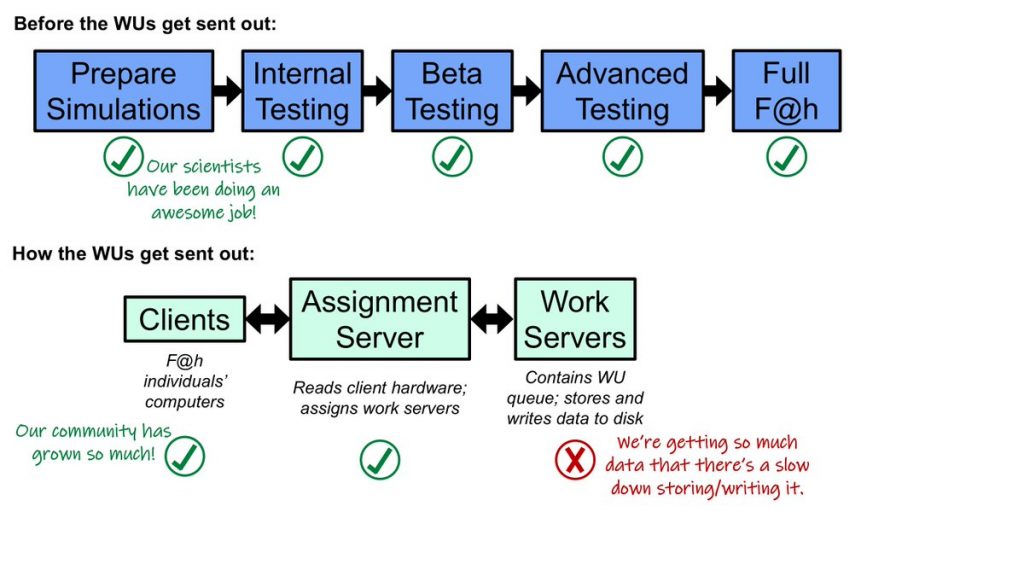Folding@Home’s 1 Exaflop Computing Does Not Match Against Conventional Supercomputers

Conceptualized almost two decades ago the Folding@Home program to crowdsource the gigantic task of solving the chaos of molecular interactions has hit a major milestone. Thanks to awareness of the ongoing corona virus pandemic, thousands of new users have signed up to put their computers to work pushing the collective computing speed to a spectacular “exaflop” of computing power: 1,000,000,000,000,000,000 operations per second.
Folding@home’s network requires computation heavy problems to be broken up and parceled into individual smaller problems for execution, following a principle of Opportunistic Supercomputing. It allows solving large-scale embarrassingly parallel problems that require supercomputing performance scales. Folding@home reported 1.5 exaFLOPS of x86 processing power as of March 2020. The Bitcoin mining network comes second with a peak hash rate of 1 exaFLOPS.
While a computing power of 1.5 exaflop is a gigantic processing speed, it does not compare against raw computing power of current breed of supercomputers. .
The F@H feeds separate parts of the data to entirely different remote processors and then recombines the results. At F@H scientists spend months breaking a problem into smaller parts, for example predicting how a string of amino acids will fold to create a protein. After this the problem is assigned to different network computers which will take different period to find a solution. Some problems, such as simulations on a small scale like parts of a protein folding, are easy to split up, but for problems that are linear (climate simulation where, for example, step two can’t be started until the results from step one are known), the multiple-brain approach doesn’t offer much help and required the brute force of a supercomputer.


